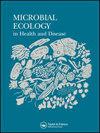Microbial trimethylamine-N-oxide as a disease marker: something fishy?
Microbial Ecology in Health and Disease
Pub Date : 2017-05-19
eCollection Date: 2017-01-01
DOI:10.1080/16512235.2017.1327309
引用次数: 64
Abstract
Production of trimethylamine-N-oxide (TMAO) via the gut microbiota has recently been proposed as an important pathophysiological mechanism linking ingestion of 'unhealthy foods', such as beef (containing carnitine) and eggs (containing choline), and the development of atherosclerosis. Hence, TMAO has gained attention as a novel biomarker for cardiovascular disease. However, fish and seafood contain considerable amounts of TMAO and are generally accepted as cardioprotective: a puzzling paradox that seems to have been neglected. We suspect that the TMAO story may be a red herring.
微生物三甲胺- n -氧化物作为疾病标记物:有些可疑?
通过肠道菌群产生三甲胺- n -氧化物(TMAO)最近被认为是一种重要的病理生理机制,与摄入“不健康食品”(如牛肉(含肉碱)和鸡蛋(含胆碱)与动脉粥样硬化的发展有关。因此,氧化三甲胺作为一种新的心血管疾病生物标志物受到了人们的关注。然而,鱼和海鲜含有大量的氧化三甲胺,被普遍认为具有保护心脏的作用:这是一个令人困惑的悖论,似乎被忽视了。我们怀疑TMAO的故事可能是转移注意力。
本文章由计算机程序翻译,如有差异,请以英文原文为准。
求助全文
约1分钟内获得全文
求助全文

 求助内容:
求助内容: 应助结果提醒方式:
应助结果提醒方式:


